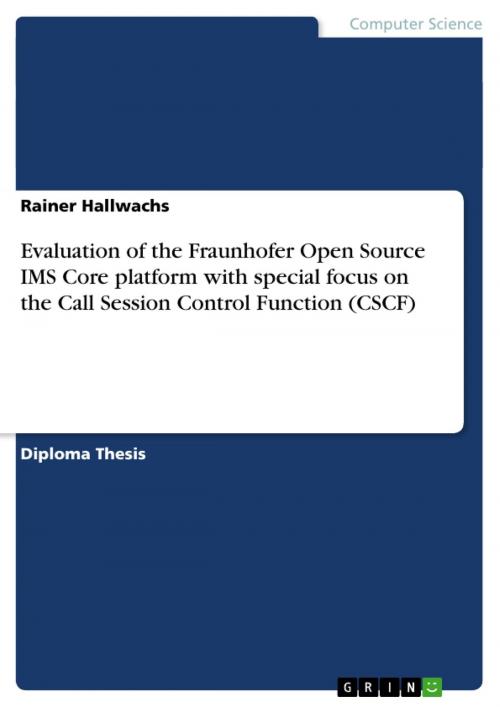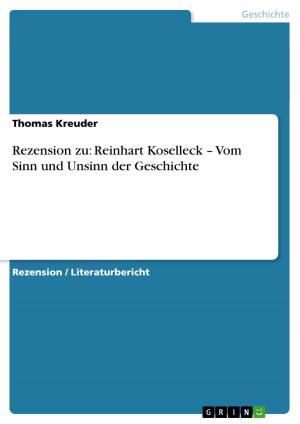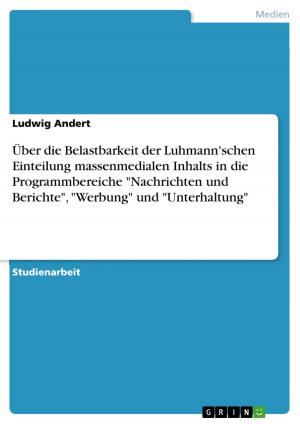Evaluation of the Fraunhofer Open Source IMS Core platform with special focus on the Call Session Control Function (CSCF)
Nonfiction, Computers, Programming| Author: | Rainer Hallwachs | ISBN: | 9783640420469 |
| Publisher: | GRIN Publishing | Publication: | September 7, 2009 |
| Imprint: | GRIN Publishing | Language: | English |
| Author: | Rainer Hallwachs |
| ISBN: | 9783640420469 |
| Publisher: | GRIN Publishing |
| Publication: | September 7, 2009 |
| Imprint: | GRIN Publishing |
| Language: | English |
Diploma Thesis from the year 2007 in the subject Computer Science - Applied, grade: 1, University of Applied Sciences Technikum Vienna, course: Betriebliche Informationsnetze basierend auf SIP bzw. verwandten Protokollen wie SDP, RTP usw., language: English, abstract: Given the increasing penetration of Internet Protocol (IP) technologies and the tremendous growth in wireless data traffic, the telecom industry is evolving towards All-IP based Next Generation Networks (NGN). The Third Generation Partnership Project (3GPP) has specified an IP Multimedia Subsystem (IMS) in 3GPP Release 5 to support converged multimedia applications across both wireless and wireline devices. IMS provides full packet call control capabilities by using the Session Initiation Protocol (SIP). SIP has been chosen by 3GPP as the signaling protocol to handle user registrations and multimedia session management in the IMS. Using IP protocols defined by the Internet Engineering Task Force (IETF), IMS will merge cellular networks and the internet, offering new service capabilities for rapid service creation and deployment of integrated IP multimedia applications. This diploma thesis provides an insight into the IP Multimedia Core Network, specifically focusing on its key element, the Call Session Control Function (CSCF). The CSCF serves as control point to manage all IMS sessions in the network, whether they are voice, video, data, messaging, gaming, or any other service. Moreover, this paper discusses the requirements identified by 3GPP to support SIP in cellular networks, and the extensions to the SIP protocol suite in order to fulfill them. The practical part of the thesis evaluates the Open Source IMS Core platform of the Fraunhofer Institute FOKUS with respect to the CSCF which is based on the SIP Express Router (SER). The analysis describes the new modules and advanced functions of SER, required to cope with the extended version of SIP and to act as a CSCF for IMS purposes.
Diploma Thesis from the year 2007 in the subject Computer Science - Applied, grade: 1, University of Applied Sciences Technikum Vienna, course: Betriebliche Informationsnetze basierend auf SIP bzw. verwandten Protokollen wie SDP, RTP usw., language: English, abstract: Given the increasing penetration of Internet Protocol (IP) technologies and the tremendous growth in wireless data traffic, the telecom industry is evolving towards All-IP based Next Generation Networks (NGN). The Third Generation Partnership Project (3GPP) has specified an IP Multimedia Subsystem (IMS) in 3GPP Release 5 to support converged multimedia applications across both wireless and wireline devices. IMS provides full packet call control capabilities by using the Session Initiation Protocol (SIP). SIP has been chosen by 3GPP as the signaling protocol to handle user registrations and multimedia session management in the IMS. Using IP protocols defined by the Internet Engineering Task Force (IETF), IMS will merge cellular networks and the internet, offering new service capabilities for rapid service creation and deployment of integrated IP multimedia applications. This diploma thesis provides an insight into the IP Multimedia Core Network, specifically focusing on its key element, the Call Session Control Function (CSCF). The CSCF serves as control point to manage all IMS sessions in the network, whether they are voice, video, data, messaging, gaming, or any other service. Moreover, this paper discusses the requirements identified by 3GPP to support SIP in cellular networks, and the extensions to the SIP protocol suite in order to fulfill them. The practical part of the thesis evaluates the Open Source IMS Core platform of the Fraunhofer Institute FOKUS with respect to the CSCF which is based on the SIP Express Router (SER). The analysis describes the new modules and advanced functions of SER, required to cope with the extended version of SIP and to act as a CSCF for IMS purposes.















